Like the computers before them, supercomputers have been confined to large warehouses that only institutions with very deep pockets can afford. As the obsessive need for computation power continues to overwhelm all parts of our lives, progression to bring TeraFLOP (trillion floating point operations per second) computing into our homes becomes ever closer.
Current CPUs provide a few GigaFLOPs of computation power, but are very general in their application. The TeraFLOP processing units shown off by Intel, along with current generation graphics cards from AMD and Nvidia that have GPGPU (General Purpose Graphics Processing Unit) functionality, all provide computation power far in excess of CPUs but their application is much more specialised.
When Intel first showcased its 80-core processor, people were confused by how we went straight from quad-core to eighty cores. In fact, it is just a research project investigating the process of making a tiled array of processors and chip stacking.
At IDF this year, Intel again showed off its 80-core processor, but this time using a working sample and a hell of a lot more detail on how the project came about. Currently, the processor requires a ton of life support to keep it going and interact with it; it’s certainly no desktop part in its current form. However the guys behind the research project make no apologies for this since it is nothing more than a technology demonstration and a proof of concept that could be adopted into future products.
Currently Intel has three terascale chips but, when we saw them, only two were working. The chip requires watercooling in order to minimise current leakage, despite being built on Intel’s very capable 65nm process. The engineers were able to overclock the 80 cores to 6.26GHz delivering two TeraFLOPs of data, at a cost of 191.79W heat output. In comparison, a single TeraFLOP can be achieved at a very reasonable 2.92GHz and an equally respectable 68W thermal design power (TDP).
Current CPUs provide a few GigaFLOPs of computation power, but are very general in their application. The TeraFLOP processing units shown off by Intel, along with current generation graphics cards from AMD and Nvidia that have GPGPU (General Purpose Graphics Processing Unit) functionality, all provide computation power far in excess of CPUs but their application is much more specialised.
When Intel first showcased its 80-core processor, people were confused by how we went straight from quad-core to eighty cores. In fact, it is just a research project investigating the process of making a tiled array of processors and chip stacking.
At IDF this year, Intel again showed off its 80-core processor, but this time using a working sample and a hell of a lot more detail on how the project came about. Currently, the processor requires a ton of life support to keep it going and interact with it; it’s certainly no desktop part in its current form. However the guys behind the research project make no apologies for this since it is nothing more than a technology demonstration and a proof of concept that could be adopted into future products.
Currently Intel has three terascale chips but, when we saw them, only two were working. The chip requires watercooling in order to minimise current leakage, despite being built on Intel’s very capable 65nm process. The engineers were able to overclock the 80 cores to 6.26GHz delivering two TeraFLOPs of data, at a cost of 191.79W heat output. In comparison, a single TeraFLOP can be achieved at a very reasonable 2.92GHz and an equally respectable 68W thermal design power (TDP).

MSI MPG Velox 100R Chassis Review
October 14 2021 | 15:04


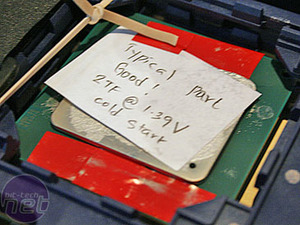
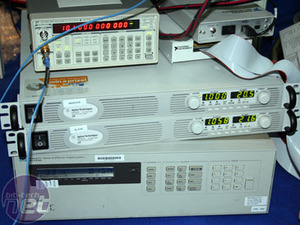

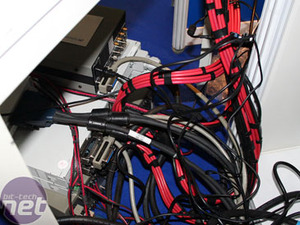
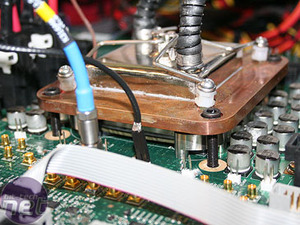
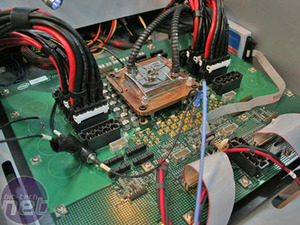
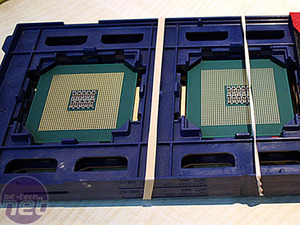








Want to comment? Please log in.